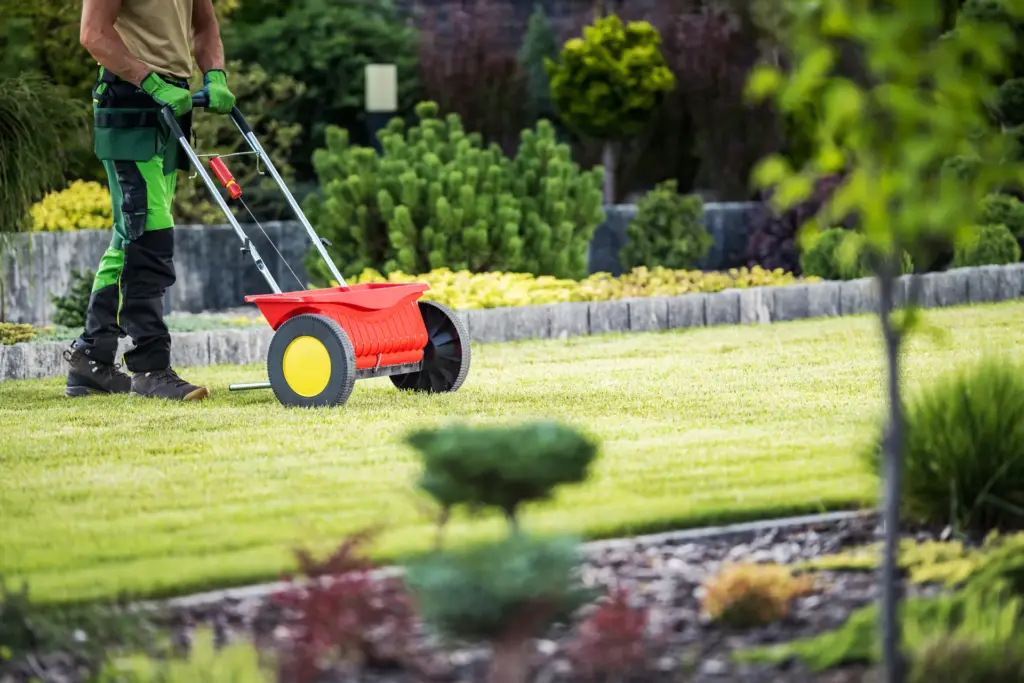Your 5-Step Late Summer Lawn Recovery Plan for Central Ohio
Home > Blog > Your 5-Step Late Summer Lawn Recovery Plan
Your 5-Step Late Summer Lawn Recovery Plan for Central Ohio

The late summer sun in Central Ohio can be tough on lawns. Between scorching heat, periods of drought, and heavy foot traffic from summer activities, your turf is likely feeling stressed. Brown patches, thinning grass, and weeds are all signs your lawn needs a little extra care before heading into fall.
The good news? Late August through early September is the best time for lawn recovery in Central Ohio. With the right steps, you can repair summer damage, improve your soil, and prepare your lawn for a lush, healthy comeback next spring. Here’s our proven 5-step lawn recovery plan for Central Ohio homeowners.
Start with Core Aeration
Central Ohio soils are heavy in clay, which means they compact quickly during the summer months. Compacted soil blocks air, water, and nutrients from reaching grass roots, leaving your lawn thin and weak.
Core aeration is the single best way to relieve soil compaction. By removing small plugs of soil throughout the lawn, aeration creates natural channels for oxygen, water, and fertilizer to penetrate the root zone. The result? Stronger roots, healthier turf, and a lawn that can breathe again.
Overseed for Thickness
Thin or bare patches after a hot summer are common. The solution is overseeding—spreading new grass seed directly after aeration.
At Meyers Green Services, we use high-quality seed that’s perfect for Lewis Center and Powell’s climate. Aeration ensures excellent seed-to-soil contact, giving new grass the best chance to germinate and thrive. Overseeding fills in weak areas, thickens your lawn, and creates a dense turf that naturally fights off weeds.
Apply the Right Fertilizer
After months of stress, your lawn is hungry for nutrients. Fall fertilization is critical because it helps grass repair root damage and store energy before winter dormancy.
A specialized fall fertilizer program gives your lawn the essential nutrients it needs now while setting the stage for vibrant green growth in the spring. A properly fed lawn in the fall is the best defense against weeds, pests, and disease in the year ahead.
Control Aggressive Weeds
Stressed lawns are an open invitation for weeds like clover, crabgrass, and dandelions. Fortunately, fall is one of the most effective times to apply post-emergent weed control.
As weeds prepare for winter, they draw nutrients deep into their roots—making them more vulnerable to herbicide treatments. This ensures weeds are eliminated at the source, giving your new grass seed the room it needs to thrive.
Adjust Your Watering Schedule
As temperatures cool down in Lewis Center and Powell, your watering schedule should shift, too. Instead of frequent, shallow watering, aim for deep, infrequent watering to encourage stronger root growth.
The goal is about one inch of water per week, delivered in one or two sessions. This helps new seed establish, strengthens roots, and builds a drought-resistant lawn ready to handle Ohio’s unpredictable seasons.
Why Work With Meyers Green Services?
Lawn care in Central Ohio is more than a one-season task—it’s a year-round investment. The work you put in now will reward you with a thicker, greener, healthier lawn in the spring.
At Meyers Green Services, we specialize in fall aeration, overseeding, fertilization, and weed control. Our team knows Central Ohio lawns inside and out, and we’re committed to helping your property look its best.
🍂 Ready to bring your lawn back to life? Contact Meyers Green Services today for a FREE, no-obligation lawn recovery quote—and enjoy your weekends while we handle the hard work!

